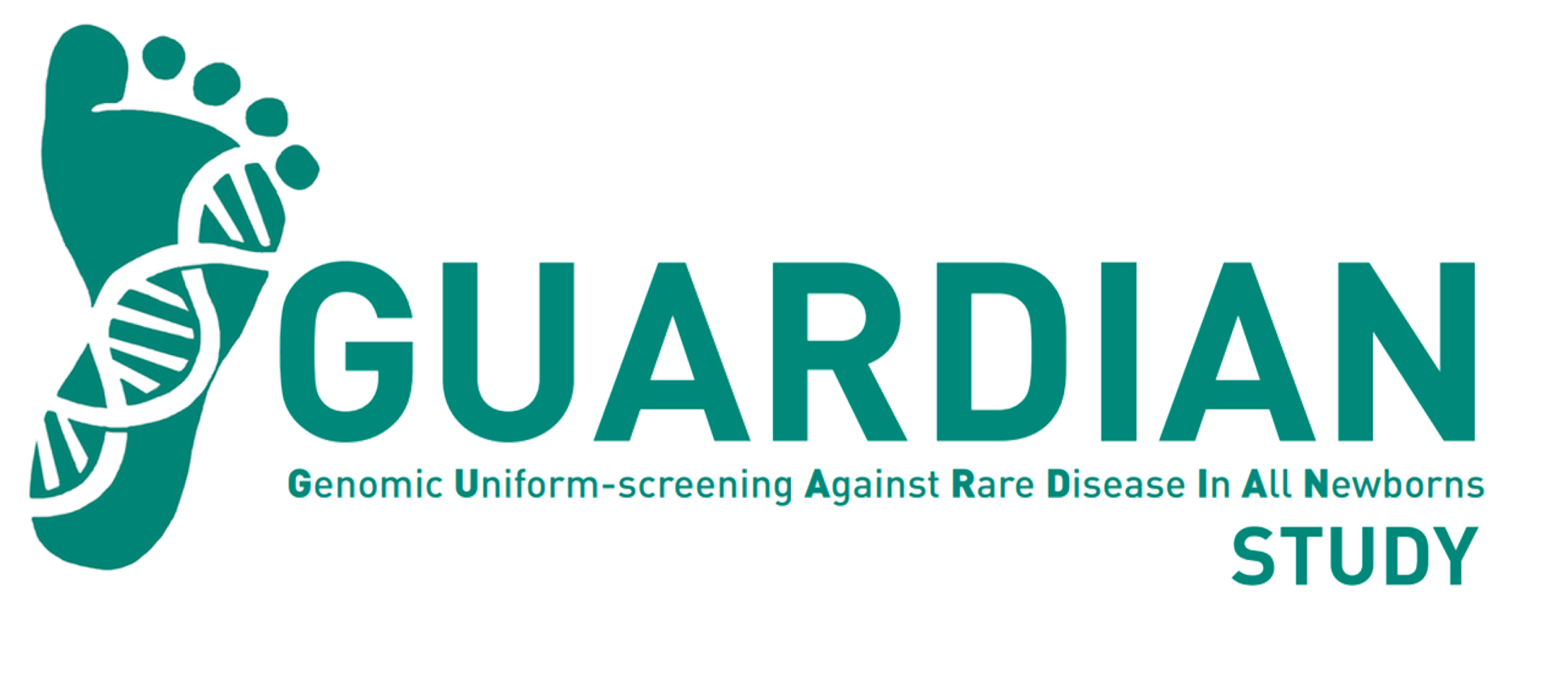Group 1 Conditions
All of the Group 1 conditions have medicines or interventions that prevent or lessen the symptoms of the condition. Not all of these conditions can be cured with medicine, but early diagnosis and early treatment can help to give your baby the best chance to live a healthier life.
Most conditions affect multiple systems. The categories below provide guidance on the primary impact of the genetic condition. Click on a category below to see all conditions related to that affected system.
- Bile acid synthesis defect, congenital, 2 (AKR1D1)
- Adenine phosphoribosyltransferase deficiency (APRT)
- 3 beta-hydroxysteroid dehydrogenase deficiency (HSD3B7)
- ADA-related adenosine deaminase deficiency (ADA)
- Immunodeficiency with hyper-IgM, type 2 (AICDA)
- AK2-related reticular dysgenesis (AK2)
- Agammaglobulinemia 4 (BLNK)
- Agammaglobulinemia, X-linked 1 (BTK)
- Complement component 5 deficiency (C5)
- Complement component 6 deficiency (C6)
- Complement component 7 deficiency (C7)
- Complement component 8 deficiency, type I (C8a)
- Complement component 8 deficiency, type II (C8b)
- Complement component 9 deficiency (C9)
- Immunodeficiency 11 (CARD11)
- Immunodeficiency due to defect in CD3-zeta (CD247)
- Lymphoproliferative syndrome 2 (CD27)
- Immunodeficiency 19 (CD3D)
- Immunodeficiency 18 (CD3E)
- Immunodeficiency 17, CD3 gamma deficient (CD3G)
- Immunodeficiency with hyper-IgM, type 3 (CD40)
- Immunodeficiency, X-linked, with hyper-IgM (CD40LG)
- Agammaglobulinemia 3 (CD79A)
- Agammaglobulinemia 6 (CD79B)
- Specific Granule Deficiency (CEBPE)
- Complement factor D deficiency (CFD)
- Properdin deficiency, X linked (CFP)
- Bare lymphocyte syndrome, type II, complementation group A (CIITA)
- Immunodeficiency 8 (CORO1A)
- Neutrophilia, hereditary (CSF3R)
- Immunodeficiency 24 (CTPS1)
- Chronic granulomatous disease (CYBB)
- DCLRE1C-related immunodeficiency (DCLRE1C)
- Immunodeficiency 40 AR (DOCK2)
- Hyper-IgE recurrent infection syndrome, autosomal recessive (DOCK8)
- Neutropenia, severe congenital 1; neutropenia, cyclic (ELANE)
- Leukocyte adhesion deficiency, type III (FERMT3)
- Congenital alopecia with T-cell immunodeficiency (FOXN1)
- Neutropenia, congenital (G6PC3)
- Neutropenia, severe congenital, type III (HAX1)
- Immunodeficiency 27B; immunodeficiency 27A (IFNGR1)
- Immunodeficiency 28 (IFNGR2)
- Immunodeficiency 15 (IKBKB)
- immunodeficiency 29 (IL12B)
- Immunodeficiency 30 (IL12RB1)
- Immunodeficiency, primary, autosomal recessive, IL21R-related (IL21R)
- Immunodeficiency 41 with lymphoproliferation and autoimmunity (IL2RA)
- Immunodeficiency 63 with lymphoproliferation and autoimmunity; IMD63 (IL2RB)
- Combined immunodeficiency (IL2RG)
- Hyper-IgE recurrent infection syndrome 4B, autosomal recessive (IL6ST)
- Immunodeficiency 104, severe combined (IL7R)
- IRAK4 deficiency (IRAK4)
- Immunodeficiency 32B (IRF8)
- Leukocyte adhesion deficiency, type I (ITGB2)
- Lymphoproliferative syndrome 1 (ITK)
- Neutropenia, severe congenital 6 (JAGN1)
- Severe combined immunodeficiency (JAK3)
- Immunodeficiency 96 (LIG1)
- LIG4 syndrome (LIG4)
- Immunodeficiency 54 (MCM4)
- Severe combined immunodeficiency AR (MTHFD1)
- Immunodeficiency 68 (MYD88)
- Chronic granulomatous disease (NCF2)
- Ectodermal dysplasia and immunodeficiency 2 (NFKBIA)
- Severe combined immunodeficiency with microcephaly, growth retardation and sensitivity to ionizing radiation (NHEJ1)
- Immunodeficiency 9 (ORAI1)
- Immunodeficiency 23 (PGM3)
- Plasminogen deficiency (PLG)
- Immunodeficiency due to purine nucleoside phosphorylase deficiency (PNP)
- Hemophagocytic lymphohistiocytosis, familial, 2 (PRF1)
- Immunodeficiency 26 (PRKDC)
- Neutrophil immunodeficiency syndrome (RAC2)
- Immune dysregulation (RAG1)
- Immune dysregulation (RAG2)
- Bare lymphocyte syndrome, type II (RFX5)
- Bare lymphocyte syndrome, type II (RFXANK)
- Bare lymphocyte syndrome, type II (RFXAP)
- Asplenia, congenital AD (RPSA)
- Lymphoproliferative syndrome, X-linked (SH2D1A)
- Agammaglobulinemia 9 (SLC39A7)
- Hepatic venoocclusive disease with immunodeficiency (SP110)
- Neutropenia, severe congenital, 8, autosomal dominant; SCN8 (SRP54)
- Immunodeficiency 31A; Immunodeficiency 3 1C; Immunodeficiency 31B (STAT1)
- Hyper-IgE recurrent infection syndrome (STAT3)
- Immunodeficiency 10 (STIM1)
- T-cell immunodeficiency, recurrent infections, autoimmunity, and cardiac malformations (STK4)
- Hemophagocytic lymphohistiocytosis, familial, 5 (STXBP2)
- Hemophagocytic lymphohistiocytosis, familial, 4 (STX11)
- Bare lymphocyte syndrome, type I (TAP1)
- Immunodeficiency, combined, with intestinal atresias (TTC7A)
- Immunodeficiency 35 (TYK2)
- Hemophagocytic lymphohistiocytosis, familial, 3 (UNC13D)
- immunodeficiency with hyper-IgM, type 5 (UNG)
- Neutropenia, neutrophil dysfunction, bone marrow fibrosis, and nephromegaly (VPS45)
- Wiskott-Aldrich syndrome (WAS)
- WAS-related neutropenia (WAS)
- Wiskott-Aldrich syndrome 2 (WIPF1)
- Lymphoproliferative syndrome, X-linked 2 (XIAP)
- Immunodeficiency 48 (ZAP70)
- KCNH2-related short QT syndrome (KCNH2)
- KCNH2-related long QT syndrome (KCNH2)
- Jervell and Lange-Nielsen syndrome; (KCNQ1)
- KCNQ1-related long QT syndrome (KCNQ1)
- NKX2-5-related heart defect (NKX2-5)
- APOB-related hyperlipoproteinemia (APOB)
- Familial hypercholesterolemia (LDLR)
- Familial hypercholesterolemia (PCSK9)
- Congenital myasthenic syndrome (CHAT)
- Congenital myasthenic syndrome (CHRNA1)
- Congenital myasthenic syndrome (CHRND)
- Congenital myasthenic syndrome (CHRNE)
- Congenital myasthenic syndrome (COL13A1)
- Congenital myasthenic syndrome (COLQ)
- Duchenne muscular dystrophy (DMD)
- Congenital myasthenic syndrome (DOK7)
- Dopa-responsive dystonia (GCH1)
- Congenital myasthenic syndrome (MUSK)
- NKX2-1-related movement disorder (NKX2-1)
- Congenital myasthenic syndrome (RAPSN)
- AGXT-related primary hyperoxaluria (AGXT)
- AQP2-related nephrogenic diabetes insipidus (AQP2)
- Renal tubular acidosis, distal, 3, with or without sensorineural hearing loss (ATP6V0A4)
- ATP6V1B1-related renal tubular acidosis with hearing loss (ATP6V1B1)
- AVPR2-related nephrogenic diabetes insipidus; (AVPR2)
- AVPR2-related nephrogenic syndrome of inappropriate antidiuresis (AVPR2)
- Bartter syndrome with sensorineural deafness (BSND)
- Bartter syndrome, type 3 (CLCNKB)
- Hyperoxaluria, primary, type II (GRHPR)
- Bartter syndrome (KCNJ1)
- Congenital nephrotic syndrome, Finnish type (NPHS1)
- Bartter syndrome (SLC12A1)
- Gitelman syndrome (SLC12A3)
- DUOXA2-related hypothyroidism (DUOXA2)
- Combined pituitary hormone deficiency (FOXA2)
- Congenital Isolated Hyperinsulinism (FOXA2)
- Bamforth-Lazarus syndrome (FOXE1)
- Diabetes mellitus, neonatal, with congenital hypothyroidism (GLIS3)
- Apparent mineralocorticoid excess (HSD11B2)
- Leptin deficiency (LEP)
- Leptin receptor deficiency (LEPR)
- Combined pituitary hormone deficiency-3 (LHX3)
- Pituitary hormone deficiency, combined, 4; CPHD4 (LHX4)
- Glucocorticoid deficiency 1 (MC2R)
- Glucocorticoid deficiency 2; GCCD2 (MRAP)
- NKX2-5-related congenital hypothyroidism (NKX2-5)
- Glucocorticoid deficiency 4 with or without mineralocorticoid deficiency (NNT)
- Congenital adrenal hypoplasia (NR0B1)
- Pseudohypoaldosteronism, type I, autosomal dominant (NR3C2)
- PAX8-related hypothyroidism (PAX8)
- Combined pituitary hormone deficiency-1 (POU1F1)
- Combined pituitary hormone deficiency-2 (PROP1)
- SLC5A5-related hypothyroidism (SLC5A5)
- TG-related hypothyroidism (TG)
- TPO-related hypothyroidism (TPO)
- TSHR-related congenital hypothyroidism (TSHR)
- ALPL-related hypophosphatasia (ALPL)
- Osteopetrosis, AR 3, with renal tubular acidosis (CA2)
- Osteopetrosis, autosomal dominant 2; osteopetrosis, autosomal recessive 4 (CLCN7)
- FGFR3-related skeletal dysplasia (FGFR3)
- Hypophosphatemic rickets (PHEX)
- Familial expansile osteolysis (TNFRSF11A)
- Vitamin D-dependent rickets (VDR)
- Diarrhea 7, protein-losing enteropathy type (DGAT1)
- Diarrhea 4, malabsorptive, congenital (NEUROG3)
- Chloride diarrhea, congenital, Finnish type (SLC26A3)
- ALDH7A1-related pyridoxine-dependent epilepsy (ALDH7A1)
- ATP7B-related Wilson disease (ATP7B)
- Cystic fibrosis (CFTR)
- Gyrate atrophy of the choroid and retina (OAT)
- RPE65-related retinal dystrophy (RPE65)
- ACTG1-related nonsyndromic hearing loss (ACTG1)
- SLC26A4-related hearing loss (SLC26A4)
- Retinoblastoma (RB1)
- Multiple endocrine neoplasia IIA / Multiple endocrine neoplasia IIB (RET)
- Megaloblastic anemia-1, Norwegian type (AMN)
- Intrinsic factor deficiency; IFD (CBLIF)
- Megaloblastic anemia-1, Finnish type (CUBN)
- Factor XIIIA deficiency (F13A1)
- Factor XIIIB deficiency (F13B)
- Hemophilia A (F8)
- Hemophilia B (F9)
- Afibrinogenemia (FGA)
- Afibrinogenemia (FGG)
- glucose-6-phosphate dehydrogenase deficiency (G6PD)
- Vitamin K-dependent coagulation defect (GGCX)
- Sickle cell disease (HBB)
- Amegakaryocytic thrombocytopenia, congenital (MPL)
- Bone marrow failure syndrome 4 (MYSM1)
- Anemia, sideroblastic, pyridoxine-refractory, autosomal recessive (SLC25A38)
- Folate malabsorption, hereditary (SLC46A1)
- ATP7A-related disorders (ATP7A)
- Hyperekplexia, hereditary 1, autosomal dominant or recessive (GLRA1)
- Hyperekplexia 2 (GLRB)
- GLUT1 deficiency (SLC2A1)
- Hyperekplexia 3 (SLC6A5)
- Spinal muscular atrophy (SMN1)
- Sepiapterin reductase deficiency (SPR)







